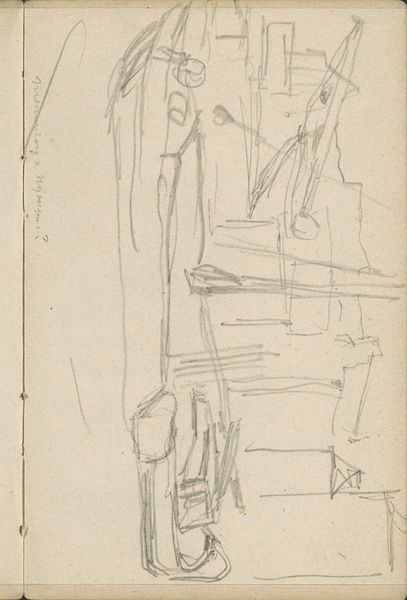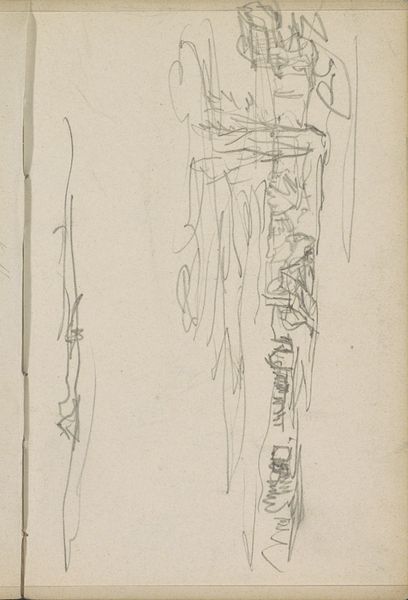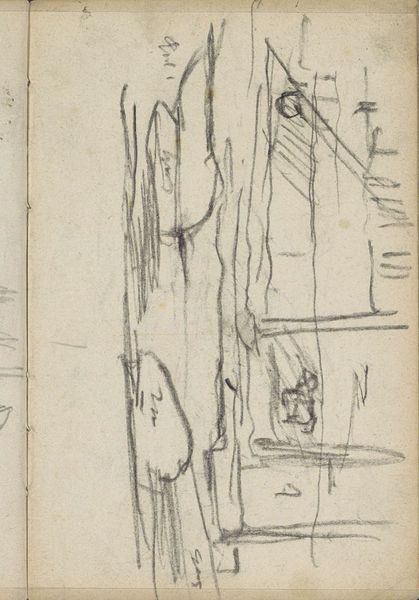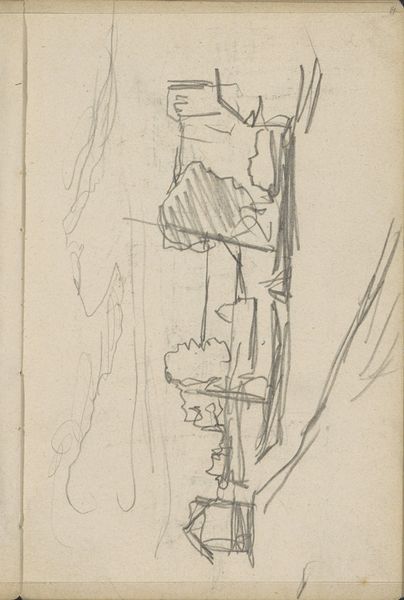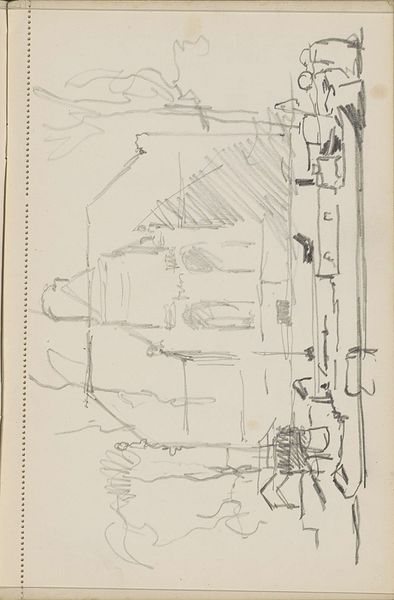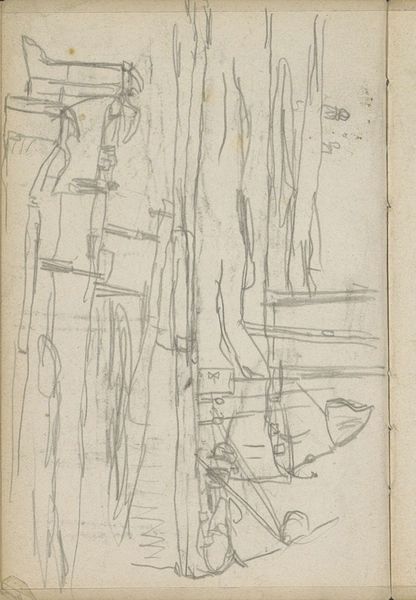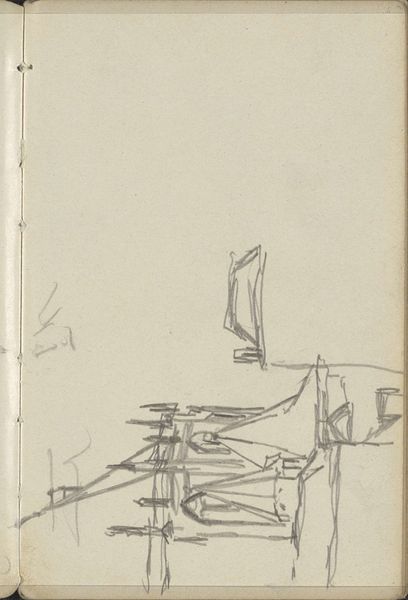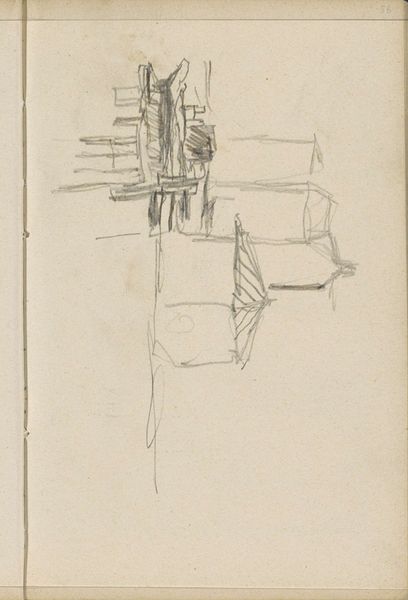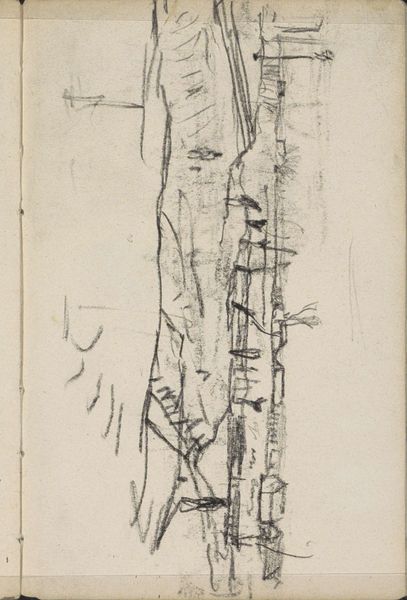
Copyright: Rijks Museum: Open Domain
Editor: This is "Stadsgezicht, mogelijk aan het water" – "Cityscape, possibly by the water" – a pencil drawing by George Hendrik Breitner, around 1903, housed right here at the Rijksmuseum. The energy of the lines really strikes me. What catches your eye? Curator: Precisely that. Note the economy of line, its capacity to suggest form with minimal commitment. Breitner has not laboured over representation, instead favouring a more gestural approach. The very sketchiness is the aesthetic endpoint. Do you see how certain areas are given more weight through hatching, creating a sense of depth, albeit a fleeting one? Editor: Yes, now that you mention it, I see that the density of the lines varies, creating shadows and highlights. The architectural forms, while abstract, still suggest a physical structure. Does the apparent casualness undermine the construction? Curator: Quite the contrary. Consider the formal relationship between the dense cluster of vertical and horizontal lines in the buildings, and the open expanse suggested to the left. This dichotomy creates a visual tension, a dynamism, which transcends mere topographical rendering. The lightness implies water perhaps? Editor: It does suggest a waterfront. What strikes me is the immediacy, like catching a glimpse of something very quickly. Curator: Precisely! Breitner seems most concerned with recording an instantaneous impression. The composition prioritises feeling and a capture of essence rather than a detailed or photographic replication. Do you appreciate this sense of “capturing"? Editor: Absolutely. Looking at the composition as a whole rather than the subject, it makes more sense as an exercise in pure mark-making and energy! I think I see now why you were focusing on the artistic line making itself and not the things the lines are depicting! Curator: Indeed. It’s the syntax, not the semantics. The language of the pencil speaks volumes here.
Comments
No comments
Be the first to comment and join the conversation on the ultimate creative platform.
